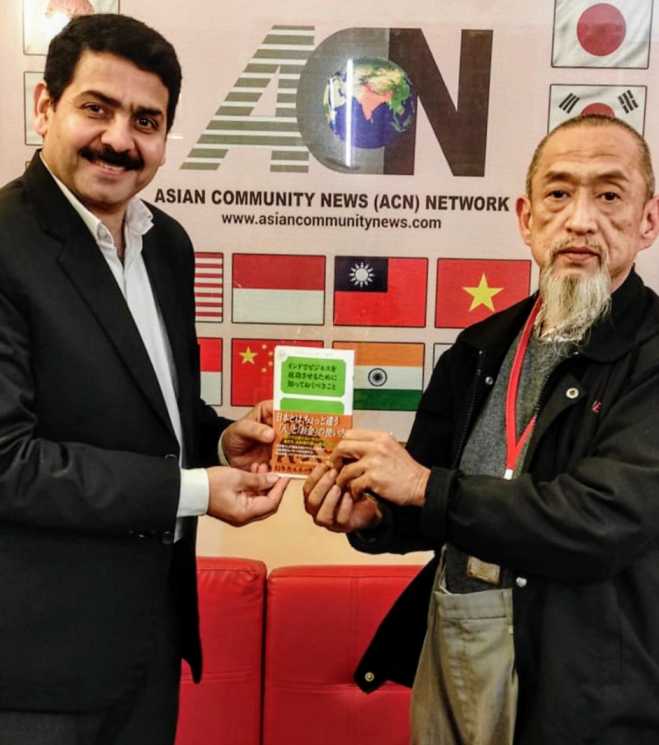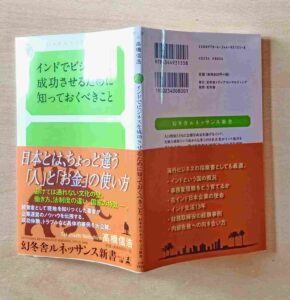ACN forays into publication of Japanese, Korean author’s book in English language
NEW DELHI: Asian Community News (ACN) Network, the only news-media agency in India reporting on Indo-Asian affairs, dedicatedly would soon roll out the English language versions of Japanese and Korean author’s books.
ACN has acquired rights for the publication of these books in India from their respective authors with origins in Japan and Korea.
As a first, ACN would soon come out with the English language version of a Korean author Kim Moon-Young’s book “3000 년 ‘카르마’가 낳은 인도상인 이야기.” Written in the Korean language, this book was originally published in Korea. A reputed publisher with offices in India and the UK is publishing the Englished language version of this book.
Titled “3000 years of Karma legacy – An Indian Baniya Story, the book is about the Indian economy with a special focus on the Gujarati business community and its influence on the growth of Indian trade and industry in India and globally. The book amply talks about the significant contribution of the Baniya community of Gujarat, Maharashtra, and Rajasthan in making India an economic Superpower. Kim worked in India as Managing Director of Korea Trade-Investment Promotion Agency (KOTRA), South Asia Headquarters, New Delhi.
Closely will follow another book written in the Japanese language and published in Japan by Nibohiro Takahashi, a senior Japanese corporate executive.
Former advisor, Japan Chamber of Commerce and Industry (JCCII) authored the book titled “What you should know about India to succeed in India” in the Japanese language (インドでビジネスを成功させるために知っておくべきこと). The former Managing Executive Officer (MEO) with a large Japanese automotive component manufacturing multi-national company in India, he lived in India for 13 years.
Korean book: “3000 years of Karma legacy – An Indian Baniya Story” “3000 년 ‘카르마’가 낳은 인도상인 이야기.”
In this book, Kim Moon-Young (58) has credited the Indian Baniya community including Marwaris, Jains, Patels, Parikhs, and others, and about their 3000 years of Karma legacy for potential making India the world G3 (Great 3) superpower along with the US and China.

Currently posted at KOTRA (Korea Trade-Investment Promotion Agency) headquarters in Seoul as Director General, Center for Indian Economy and Management Research, KOTRA Academy, Mr. Kim was Managing Director of KOTRA, South Asia Headquarters in New Delhi (2019-2021). KOTRA is the apex national trade and investment promotion agency of the Republic of Korea (RoK) government.
According to Kim, the Indian Baniya groups are and will remain dominant not only in traditional sectors but also in the new generation industries like IT-enabled e-commerce platforms and other services. Some examples are Reliance and Birla group of companies in the traditional sector and Flipkart, Snapdeal, and Myntra – all owned and run by Baniyas.

“The Indian Baniya community not only drove the economic prowess of India for over 3000 years, but they also continue to do it today, and will contribute in making India a world’s economic superpower in times to come as well. This community forms the part of the G3 merchant groups that include Jewish and Chinese merchant groups who own a major chunk of business activities in their respective countries as well as across the world,” Kim told Asian Community News (ACN) Network.
His book’s content is based on his first-hand exposure and practical experience while staying in Ahmadabad and other parts of India for a total term of eight years.
In 1997, he came to India to set up KOTRA’s Ahmedabad office as its Director, and later moved to the New Delhi office and remained there till 2002 for five years. He again came to India in 2018 and was there till 2021.
Japanese book: “What you should know about India to succeed in India” (インドでビジネスを成功させるために知っておくべきこと).
This book concretely summarizes the struggles of a Japanese executive who worked in India for 13 years. Nobuhiro Takahashi (57), the former Managing Executive Officer (MEO) of a large Japanese automotive component manufacturing multi-national company in India, has poured his 30 years of corporate experience of dealing with the Indian business ecosystem into his 142-page book Japanese language printed and published in Japan.

Out of his long experience, he has penned down in-depth information on the Industrial Relations (IR) scene in the backdrop of human resource development and labor, factory, and wage laws and acts with an apt comparison between India, Japan, China, Thailand, etc.
Related article: Japanese executive scribes tips on how to succeed in business in India
The book also mentions various trade and labor unions and labor unrest incidents reported in the past, especially in Gurugram (Haryana). The book offers tips to the Japanese companies based on the learning out of the labor unrest incidents.

According to Nobuhiro Takahashi, there are many books about India. Still, many of them are about India’s social situation and tourist information, so it is difficult to imagine the country as a whole.
“The reality of India, which is characterized by “unity in diversity,” is not conveyed generally. As one of India’s former directors, I strongly feel that I should tell the people of Japan about the stereotypes of information and the points of management in India that are free from prejudice,” Nobuhiro Takahashi stated in his book.



